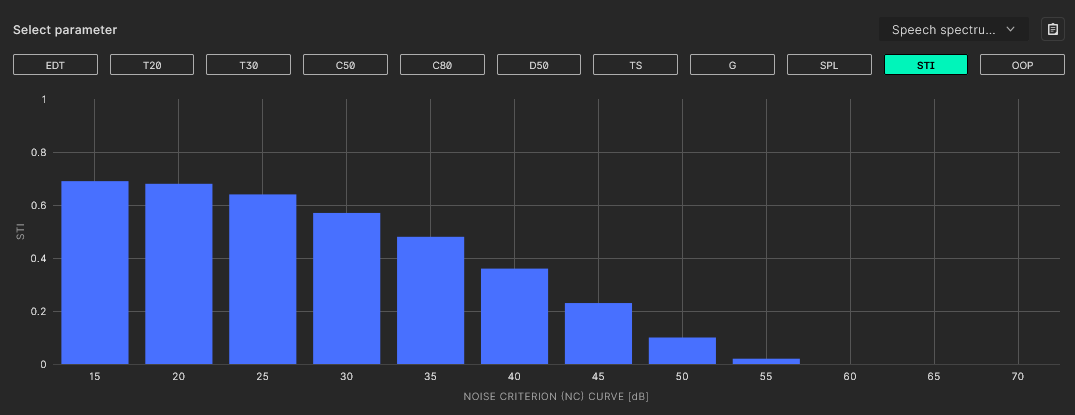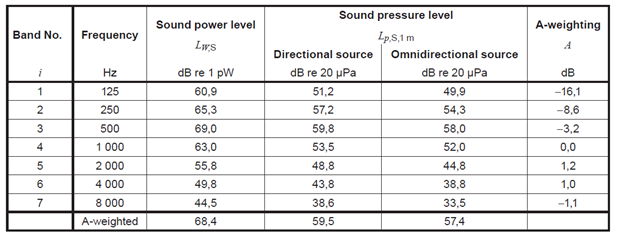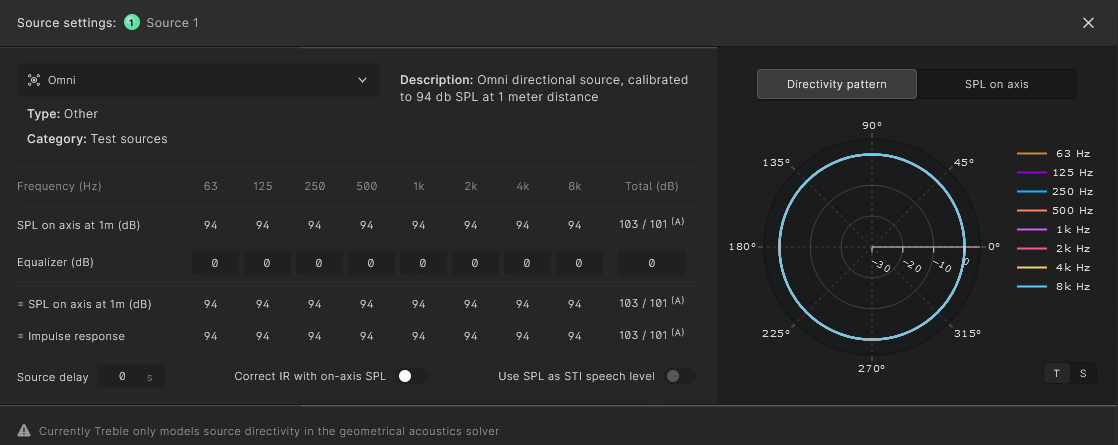STI Analysis
After running a simulation there are two options when viewing the Speech Transmission Index (STI) results. The first option can be used to efficiently estimate the STI of unamplified speech in a room and integrates into typical room acoustic simulation setups without requiring dedicated source definitions (further explained below). The second option can be used to estimate the STI resulting from one or more combined sources with user defined source characteristics. It can e.g. be used to design audio systems such as a PA (public announcement) system with either one, or multiple combined sources or the STI resulting from a custom speech spectrum with a custom directivity.
Speech intelligibility is calculated following the indirect method as proposed by the standard IEC 60268-16 [1]. In this method, applicable only to linear, time-invariant systems, the modulation transfer function MTF is calculated using the Schroeder method [2] for each filtered octave band and modulation frequencies set by the standard [1].
When analyzing simulation results in Treble for an individual receiver you can select the "STI" button from the list of acoustical parameters. The resulting graph displays STI values for different NC-curves, defining the background noise:
Custom background noise inputs are currently not available but are on our near term roadmap.

When selecting the "STI" button you will notice that an additional dropdown menu appears above it. This dropdown menu has two options. A description of which is as follows:
Speech spectrum – ISO 3382-3
This option can be used to simulate the STI of unamplified speech within a room.
When selected it will display the resulting STI levels given a unisex speech source as defined in ISO 3382-3. Note that the standard requires the source to have an omnidirectional directivity pattern. This field is therefore only available for an omnidirectional sound source and cannot be used with other source types or summed sources.
The results in this field are unaffected by the overall SPL value of the source you define in Treble. This is because Treble calculates the attenuation between the user defined source and the selected receiver and applies that attenuation to the ISO 3382-3 speech spectrum, from which the STI value is calculated. This workflow allows the user to get STI results without requiring a setup of a specific STI source, that would require additional steps in the simulation process and potentially render other parameter results invalid.
The ISO 3382-3 speech spectrum is shown in the following table, Treble uses the Omnidirectional source spectrum:

Note that before February 6th 2025 Treble used the directional source spectrum in the table above. Simulations ran before that time can therefore have slightly different STI results compared to simulations ran after.
Source SPL level
This option can be used to simulate the STI of one or more combined sources with user defined spectrum and directivity. It can therefore be used for any user-made audio system, such as a PA system, or a custom speech source.
When setting up a simulation and creating a source you can select the source settings menu to analyze the directivity and on-axis SPL level.

In this menu you can select between the sources in the Treble library, change the overall gain of a source and change the eq of individual octave bands prior to commencement of simulations. Source settings in this menu will then be factored into the STI calculations when the "Source SPL" option is selected in the results view.
To learn more on how to import a custom source definition read more here
For summed sources and individual non-omni sources the "Source SPL" option is chosen by default as the other option requires a signal from a single omni source to be valid.
When comparing the two options, "Speech spectrum – ISO 3382-3" and "Source SPL level", for a single omni source the STI values for the latter option will be much higher. This is due to the default omni source having an overall on-axis SPL value of 101 dBA at 1m distance. When that SPL value is used for the basis of STI calculations (using the Source SPL option) it will result in a much higher S/N ratio than the "Speech spectrum – ISO 3382-3" calculation method, which is based on an omnidirectional source with an on-axis SPL value of 57,4 dBA at 1 m distance as shown in the table above.
References
[1] IEC 60268-16, Sound system equipment — Part 16: Objective rating of speech intelligibility by speech transmission index.
[2] M. Schroeder. Modulation Transfer Functions: Definition and Measurement. Acustica, 49:179-182, 1981.